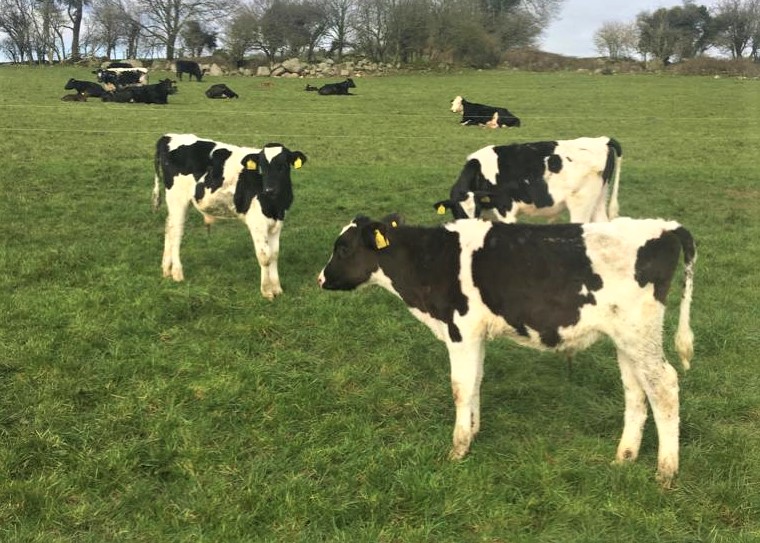The start of the grazing season in 2020 has been challenging. With poor ground conditions and reduced growth rates, farmers across the country have had to change and adapt to the conditions.
Thankfully, the weather has turned a corner, and while growth rates are nothing to get excited about at the minute, over the last few weeks more and more cattle have been turned out to pasture.
Tractors equipped with slurry tankers and fertiliser spreaders are a common sight around rural Ireland, as farmers and contractors catch up on field work and move to get grass growing.
Due to the unfavourable grazing conditions, the spring rotation planner has had to be readjusted to cope with the circumstances.
This has not been an easy task, as farmers try to find a ‘sweet spot’ between getting paddocks grazed off to have grass there for the second rotation, while also getting silage fields grazed, fertilised and closed up.
While some farmers have been successful, others were not. Low growth rates have ‘checked’ regrowths for the second rotation.
However, with growth rates expected to increase, farmers should aim to start the second rotation when the paddocks that were grazed first hit 1,200-1,400kg DM/ha (10cm); the paddocks following behind should have covers of 1,000kg DM/ha.
So, it is important to walk your farm and keep your eye on the paddocks that were grazed first this spring.
AgriLand spoke to a number of farmers in the Teagasc Green Acres Calf to Beef Programme to get an update on how the tricky start to the grazing season is progressing on their farms.
I got out day time only on January 24 after completing a grass walk. Some covers were up at 1,200-1,300kg DM/ha which accounted for 7-8ac. The rest of the paddocks were at 400-600kg DM/ha.
So I went out by day with 74 yearling heifers and bullocks. They really settled into the grass and only missed two days from that date to the end of February. To get across the ground quickly I targeted the lower covers.
My demand for grass was low as they were younger stock and a proportion of the older stock are going to be finished out of the shed. But I had 29 adult bullocks that went back to grass along with 31 autumn-born calves.
I had everything out bar the spring-born calves. Everything was moving swimmingly with 75% of the ground grazed and then the growth didn’t appear.
Teagasc’s John Douglas and I had a good look and decided we had to take some stock back in as I was going to run out before the start of the second rotation. I took back in 29 yearling heifers and the 29 adult bullocks and left 45 yearling steers grazing along with the autumn-born calves. To slow them up, I started supplementing with silage in the paddocks – just to stretch the grass.
As of my last grass walk on Sunday [March 29], the growth was 27kg/DM/day; so I will have grass for everything around April 10 all going well. I’ll start the second rotation in paddocks with covers of roughly 1,200-1,300kg DM/ha.
In terms of fertiliser, for the first round, I went with 23 units of urea in January. Then the next round with 46 units.
I cut silage from my paddocks, so I have three of those closed off, which got slurry and I will go with nitrogen any day now and aim for cutting in May.
We got out early with 40 yearling cattle on February 10. I had 45 autumn-born calves that were on-off grazing around the same time until they were out full-time on March 1.
Suckler cows were turned out as they calved, so there are 19 of those out along with their followers. The rest of the 80 yearlings were on fodder crops and finishing up loose beet. The growth was so bad I’ve had to start supplementing silage. I was reluctant to rehouse and I’m feeding silage in the paddocks to slow up grazing and my first rotation will be finished around April 5 – it would be finished long ago if I hadn’t slowed them up with silage. I went out with 23 units of urea in early February and I went again 10 days ago with 30 units.
I put out slurry on the silage ground after grazing during February and the nitrogen is ready to go on that 30ac.
All cattle are out bar the spring-born calves and there are 40 or so finishing cattle in the shed; some of them will be fit to go to the factory in a couple of weeks’ time. Other than that, I have 74 spring-born calves in the shed and all are going well.
I only got out with cattle this week. The ground where we are was just unworkable over the last number of weeks which pushed back my turnout date. Ground conditions have dried up and we can travel away but it was a terrible spring.
We would always be later ground in this area, but I have 90 yearling bulls out now and these are split into three separate mobs. And I have 14 fattening bulls that will be finished out of the shed over the next two-to-three weeks.
The silage ground was grazed tight in the back end of 2019 with a view to not grazing this spring. It got slurry earlier in the year which was applied with a trailing shoe and it got nitrogen fertiliser last week so it’s now closed up. This 46ac will be cut in early-to-mid May and I’m hoping it will be good-quality.
The grass growth on the farm last week was 17kg DM/ha/day. The yearlings will graze the lighter covers first so they can move quickly through these paddocks; the grazing ground received 23 units of urea last week.
Although the weather has been extremely bad, and turnout was delayed this spring, I have 90 spring-born calves sourced, with another 20-30 to come and all has been going well.






